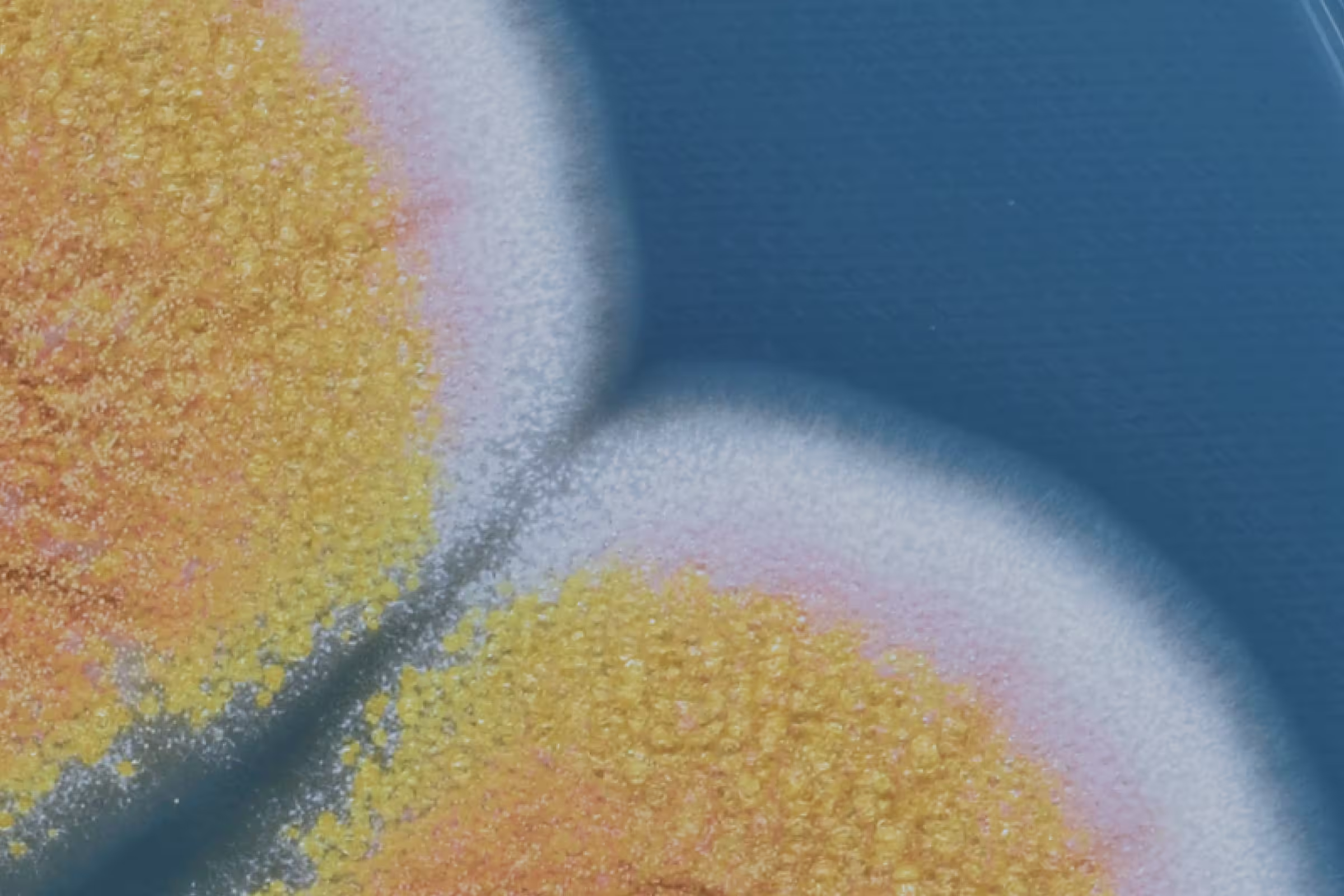

Yeast Infection vs UTI: Symptoms & Testing Methods
Learn the key symptoms and testing methods to tell a UTI from a yeast infection and find out when to use the Evvy vaginal microbiome test.
Words by Rachel Mantock
Scientifically edited by Dr. Krystal Thomas-White, PhD
Medically reviewed by Dr. Christine Vo, MD
If you’re guilty of reaching for over-the-counter (OTC) antifungals as soon as you feel a prickly vulva sensation come on, you’re not alone. That irritating itch is a yeast infection’s signature symptom, and waltzing into a pharmacy, grabbing a suppository off the shelf, and popping it up there at home is simple enough. On the other hand, booking an OB-GYN appointment and waiting, itchy and uncomfortable, is a bigger hassle.
But sometimes OTC yeast infection treatment doesn’t help — this could be because you don’t have a yeast infection at all.
If you find yourself in this position, you may wonder, could my symptoms be the beginning of a urinary tract infection (UTI) instead, then?
When experiencing vulva irritation, it’s not uncommon to suspect one or the other. Yeast infections and UTIs are two of the most well-known genital tract infections. But, despite their shared frequency and name-brand recognition amongst people with a vagina, they typically don’t share that many symptoms.
We go over the key differences between a UTI vs yeast infection, as well as other conditions with similar symptoms below, so you can have a better sense of what might be up down there.
Symptoms of a yeast infection
A vaginal yeast infection occurs when there's an overgrowth of the Candida fungus (most often, Candida albicans). It’s important to note that a weakened immune system, antibiotic use, uncontrolled diabetes, and hormonal changes make it easier for Candida species to multiply.
Yeast infection symptoms include:
- Thick, white (or creamy) discharge that doesn’t smell
- Vaginal itching, irritation, and soreness around the vagina
- General vulvar itching
- Painful urination and sex.
Symptoms of a UTI
A urinary tract infection is a bacterial infection that affects the urinary system, most often the bladder. It’s usually caused by bacteria from the anal area or feces entering the urethra and traveling up the urinary tract. UTI symptoms include:
- A burning sensation when peeing
- Pain or discomfort when you pee
- A frequent and sudden urge to pee
- Needing to pee more often, especially during the night
- Blood in your urine
- Lower back or lower tummy pain
- A high temperature
- Fever, feeling hot, and shivering.

Recurrent symptoms? Get Evvy's at-home vaginal microbiome test, designed by leading OB-GYNs.
Can you have a UTI and a yeast infection at the same time?
Yes, it’s possible to have a UTI and a yeast infection at the same time, though it’s not very common.
Both infections affect different parts of the urinary and genital systems, but can sometimes overlap, especially if one infection disrupts the normal balance of bacteria and yeast. Because UTIs are caused by bacteria and yeast infections by fungi, they require different treatments — antibiotics for UTIs and antifungal medications for yeast infections.
If you experience symptoms like burning during urination, unusual discharge, itching, or pelvic pain that don’t improve with initial treatment, it’s important to see a healthcare provider. They can test for both infections and recommend a combined treatment plan to effectively clear both at once.
Testing methods: How to tell if it’s a UTI or a yeast infection
Distinguishing between a urinary tract infection (UTI) and a yeast infection is important because they require different treatments. A common method to diagnose a UTI is a urine dipstick test, which detects signs like white blood cells, nitrites, or blood in the urine. For more accuracy, a urine culture can be done to identify the specific bacteria causing the infection. These tests are typically done at a clinic or lab.
To diagnose a yeast infection, healthcare providers usually perform a pelvic exam and collect a vaginal swab. The sample is examined under a microscope or cultured to confirm the presence of Candida. For more advanced testing, Evvy offers a vaginal microbiome analysis that can detect yeast overgrowth along with other imbalances in vaginal flora. This precision test helps provide a clearer picture of your vaginal health and guides targeted treatment.
UTIs and yeast infections can sometimes feel similar because they both cause burning, itching, and discomfort when you pee or have sex. If you’re experiencing any of these symptoms, it’s important to see a healthcare provider for the right diagnosis and care.
How do I check myself for a yeast infection?
To check yourself for a yeast infection, start by looking for common signs like thick, white, clumpy discharge that resembles cottage cheese, along with itching, redness, or irritation around the vulva. You might also feel a burning sensation when you pee or have sex. If symptoms persist, worsen, or are unclear, consider using the Evvy Vaginal Health Test for an accurate vaginal microbiome analysis.
If it’s not a yeast infection or a UTI, what else could it be?
Though they aren’t talked about as much, believe it or not, common vaginal infections can mimic the same symptoms as UTIs and yeast infections. These include:
Bacterial vaginosis
What is BV?
Bacterial vaginosis (BV) is one of the most common vaginal infections. BV occurs when there's an imbalance in the vaginal microbiome — specifically, a decrease in protective Lactobacillus bacteria and an overgrowth of unwanted bacteria. This imbalance can be triggered by anything that disrupts vaginal pH, including sex, scented feminine hygiene products, or even stress.
Common symptoms include a strong, often fishy odor (especially after sex), grayish or watery discharge, and sometimes mild irritation. Despite how common it is, BV is rarely talked about, largely due to misconceptions shaped by marketing and societal pressure that vulvas should look and smell “sweet” or “clean.” This creates stigma around BV, particularly because of its distinct odor.
Emerging research also suggests that BV-causing bacteria may be sexually transmitted, although it’s still not considered a sexually transmitted infection (STI). With sex as a risk factor, it's vital to challenge outdated, misogynistic ideas about vaginal “cleanliness” and instead promote education, research, and shame-free care for every kind of vaginal microbiome.
How do its symptoms differ from a yeast infection?
While it isn’t usually a symptom of BV, some people do report experiencing itching. And though an increased amount of vaginal discharge can be common with all types of vaginal infections, a yeast infection is more likely to present with a thick, creamy (off-yellow), cottage cheese-like discharge than BV or an STI.
Antibiotics, BV, and yeast infections
Bacterial vaginosis (BV) is commonly treated with antibiotics, but this treatment can sometimes lead to a yeast infection. Researchers are still unsure why this occurs, but it is believed that antibiotics disrupt the balance of healthy and unhealthy vaginal flora. This disruption can allow for an overgrowth of Candida due to a decrease in Lactobacillus strains. However, no single study has definitively confirmed this theory.
Plus, a 2019 review on the link between antibiotic use and vaginal yeast infections found that women with low levels of vaginal lactobacilli weren’t more likely to get a yeast infection. Nor were women dealing with recurrent yeast infections more likely to have lactobacilli-deficient vaginal microbiomes.
The same review suggests that maybe antibiotics don’t impact Lactobacilli at all. But instead, they trigger a change in the cells of the vaginal wall, which allows a Candida overgrowth to take place. However, more research is also needed to set this theory in stone.
Vulvar skin irritation
At the first sign of vulvar itching, we often suspect a yeast infection is to blame, and with good reason, as it’s the most common cause of vaginal and vulvar itching.
It just so happens that the second most common cause of vulvar itching — dermatitis (most often, lichen sclerosus or vulvar eczema) — isn’t as well known.
Because the skin of the labia minora is similar to the skin on the inside of the cheek, vulvar dermatitis does not present the same way it does on the rest of the body. For example, skin flaking and redness might not be noticeable in the same way.
Laundry detergents, fabric softeners, and scented products may be triggers for vulvar dermatitis, so try switching to an unscented soap if you suspect any of these could be a culprit! Genital hair removal, vitamin deficiencies, and the use of panty liners can also play a role, though only a small amount of evidence alludes to this.
Only using water to wash the vulvar area is the right method for most people, but for those who continue to experience dryness or irritation of the vulvar skin, ointments and emollients may help.
Thicker, greasier types of ointment creams are recommended for after bathing, to protect the area throughout the day. Try putting a thin ointment (like coconut oil, vaseline, or a silicone-based lubricant) and apply a thin layer (no slathering). It all sounds a bit time-consuming. It is, take it from someone who does this ‘cleanse and protect’ process every day (but finds it surprisingly effective).
FAQs
How do I know if I have a UTI or yeast infection?
It can be challenging to tell the difference between a UTI and a yeast infection because both can be uncomfortable, but they come with different symptoms. A UTI typically brings on a strong, persistent urge to pee, a burning sensation when you do, and sometimes cloudy or strong-smelling urine. You might also feel some lower abdominal pain. On the other hand, a yeast infection is more likely to make you feel intense itching and irritation, and give you a thick, white discharge without a strong odor. Pain during urination can happen with both conditions, but if it’s mainly external (around the vaginal area), it might indicate a yeast infection. If you're not sure, it's best to talk to a healthcare provider for proper testing and treatment or take an Evvy Vaginal Health Test.
Can a yeast infection cause frequent urination?
Typically, yeast infections don’t cause a frequent urge to pee.
Will UTI treatment clear a yeast infection?
No, UTI treatment won’t help with a yeast infection. UTI medications, such as antibiotics, are specifically designed to treat bacterial infections in the urinary tract, while an overgrowth of the fungus Candida causes yeast infections. To treat a yeast infection, you'll need an antifungal medication available over the counter or by prescription. If you're experiencing symptoms and aren't sure whether it's a UTI or a yeast infection, it's best to consult with a healthcare provider for an accurate diagnosis or take an Evvy Vaginal Health Test.
Is burning pee a UTI or a yeast infection?
A burning sensation when you pee is most commonly a symptom of a UTI, but it can also happen with a yeast infection. The key difference is that a UTI usually causes a sharp, stinging pain when you pee and often comes with frequent urges to pee, cloudy or bloody urine, and pelvic pressure. With a yeast infection, the burning is typically due to irritated vulvar tissue, and you might feel it at the opening of the vagina rather than inside the urinary tract.
What does a yeast infection feel like when you pee?
With a yeast infection, peeing can cause a burning or stinging sensation on the vulva, especially if the skin is raw or irritated from itching. It usually doesn’t come with internal urinary pain or urgency like a UTI would. If you’re unsure, it's a good idea to get tested, since treatment differs for each condition.





